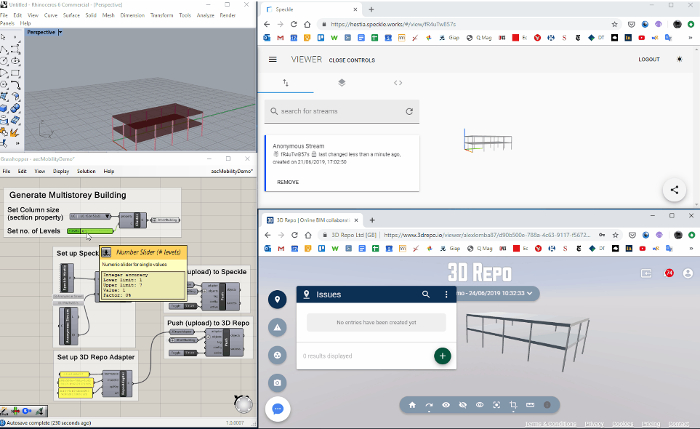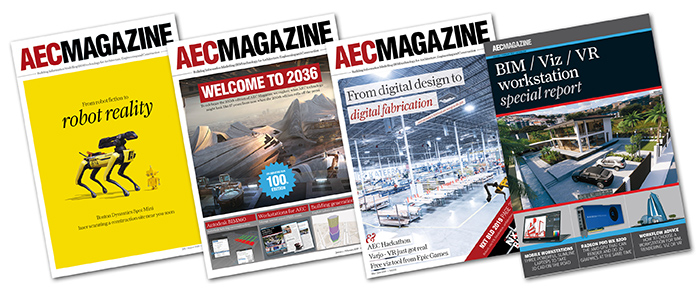The collaborative project breaks open files such as .RVT or .QGS to be transactional on the individual parts of the file
The Innovate UK funded ‘AEC Delta Mobility’ project that lets designers, integrators, and fabricators live-stream design changes to 3D models instead of sharing large files over-and-over again, is nearing completion
The project is being worked on by Buro Happold, 3D Repo, Speckle Systems, UCL Bartlett School of Construction & Project Management and Rhomberg Sersa Rail Group, with external support from HOK, and Atkins.
The project aims firstly to help engage manufacturers in the early design stages and result in the increased pre-manufactured value of build assets across the construction sector, and secondly, to increase the productivity of construction projects by over 15%.
The AEC Delta Mobility project breaks open files such as .RVT or .QGS to be transactional on the individual parts of the file vs. the entire file itself. So, where a small design change (a delta) is made to a single object in a 3D model, it is only the small design change that will be transmitted.
The image above shows an example using a rail tunnel federated in 3D Repo which experiences bending as well as elevation changes throughout its length. The desired task is to detect and visualise model changes in a 3D environment. Here, the model comparison is based solely on geometry, regardless of object IDs and file or data format and can be compared easily. Green indicates volumetric additions to the 3D model, and red for volumetric deletions. These model revisions, or design changes are currently communicated by transmitting and comparing the entire revision. This is where the AEC Delta Mobility project steps in, transmitting only the small design change to speed up the process.
The image below shows the implementation of The Buildings and Habitats object Model (BHoM) running inside Grasshopper linking across via live adapters to Speckle Systems and 3D Repo. The live adapters allow BIM objects to pass through to the reference platforms shown on the right-hand side. Changing the number of floors of a building in Grasshopper is then live streamed to Speckle Systems and 3D Repo to reflect the changes.
The current testing phase of the project is due to finish in July 2020. For more information see here, or visit the GitHub page.

If you enjoyed this article, subscribe to our email newsletter or print / PDF magazine for FREE







